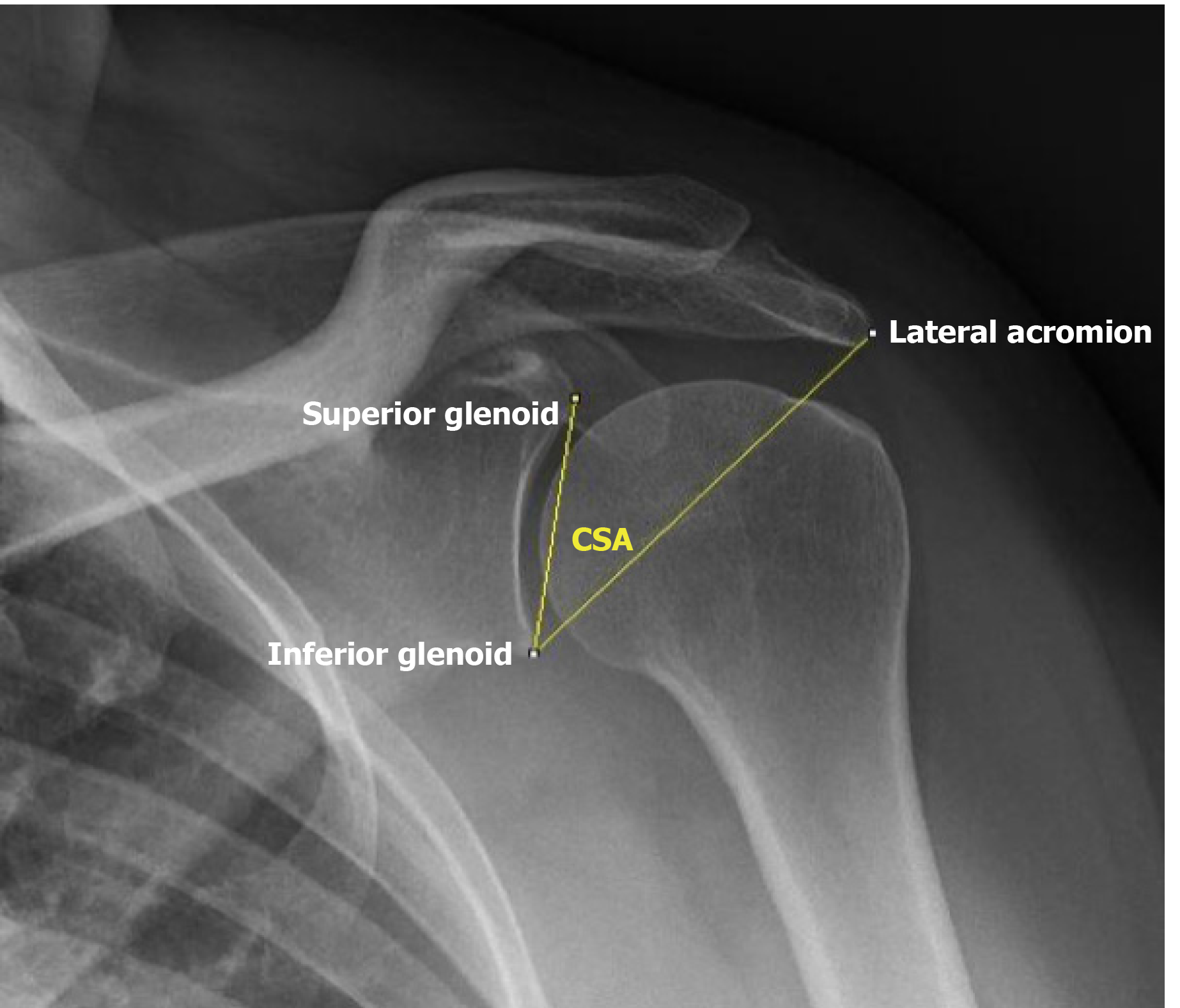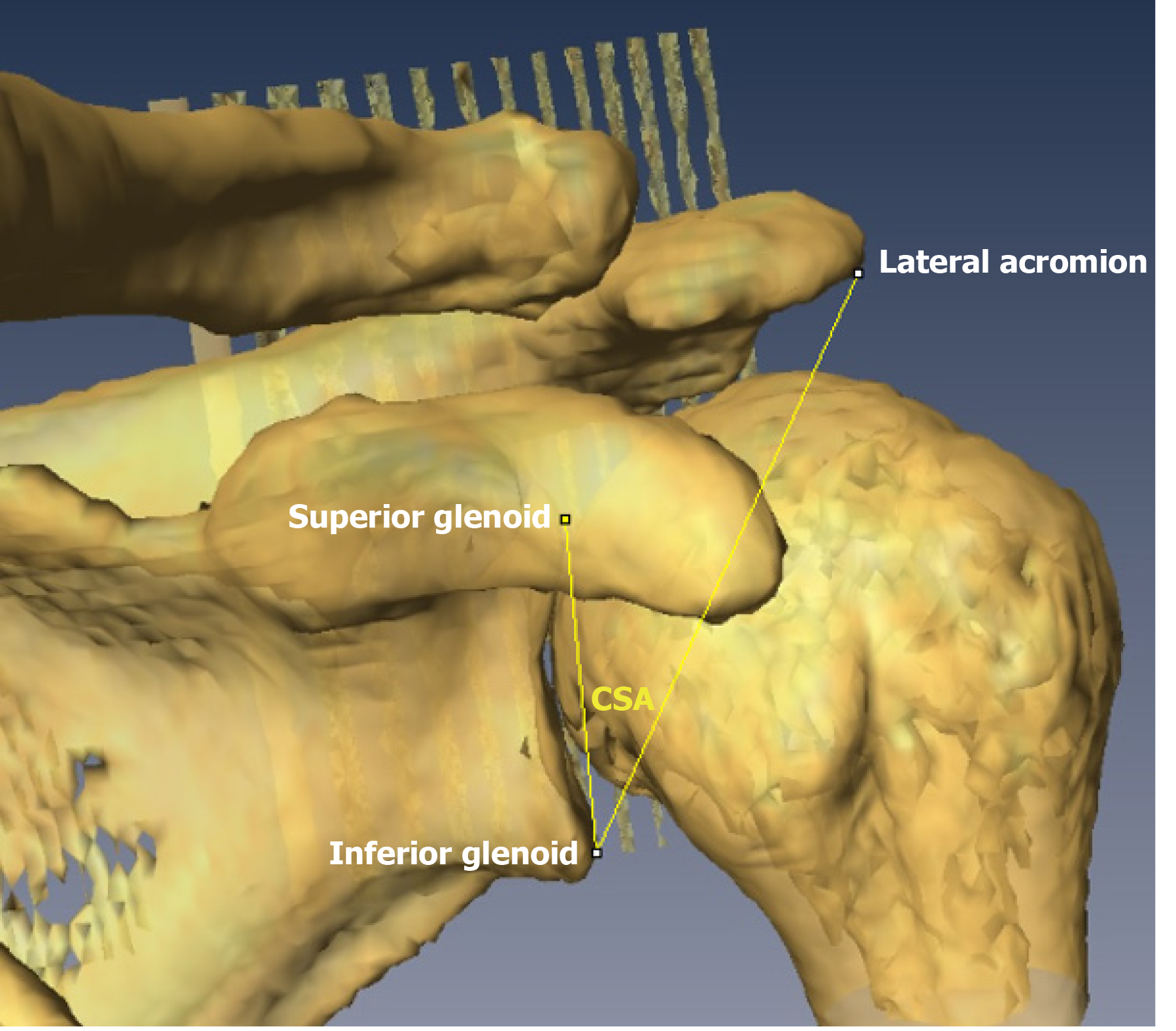Copyright
©The Author(s) 2021.
World J Orthop. May 18, 2021; 12(5): 301-309
Published online May 18, 2021. doi: 10.5312/wjo.v12.i5.301
Published online May 18, 2021. doi: 10.5312/wjo.v12.i5.301
Figure 1 Radiograph: Measurement of the critical shoulder angle on a true anteroposterior radiograph, classified as Type A using the Suter-Henninger criteria[5].
Figure 2 Computed tomography: measurement of the critical shoulder angle on a semi-transparent three-dimensional reconstruction of computed tomography data.
Figure 3 Inter-method correlation: Critical shoulder angle measurements compared between radiographic and computed tomography-based methods.
CT: Computed tomography.
Figure 4 Intra-observer agreement (radiographs) (Bland-Altman plots): Critical shoulder angle measurements repeated after a one-week interval.
A: Radiographs; B: Computed tomography-based method. CT: Computed tomography.
Figure 5 Inter-observer agreement (radiographs) (Bland-Altman plots): Critical shoulder angle measurements compared between Observers 1 and 2.
A: Radiographs; B: Computed tomography-based method. CT: Computed tomography.
- Citation: Mah D, Chamoli U, Smith GC. Usefulness of computed tomography based three-dimensional reconstructions to assess the critical shoulder angle. World J Orthop 2021; 12(5): 301-309
- URL: https://www.wjgnet.com/2218-5836/full/v12/i5/301.htm
- DOI: https://dx.doi.org/10.5312/wjo.v12.i5.301













